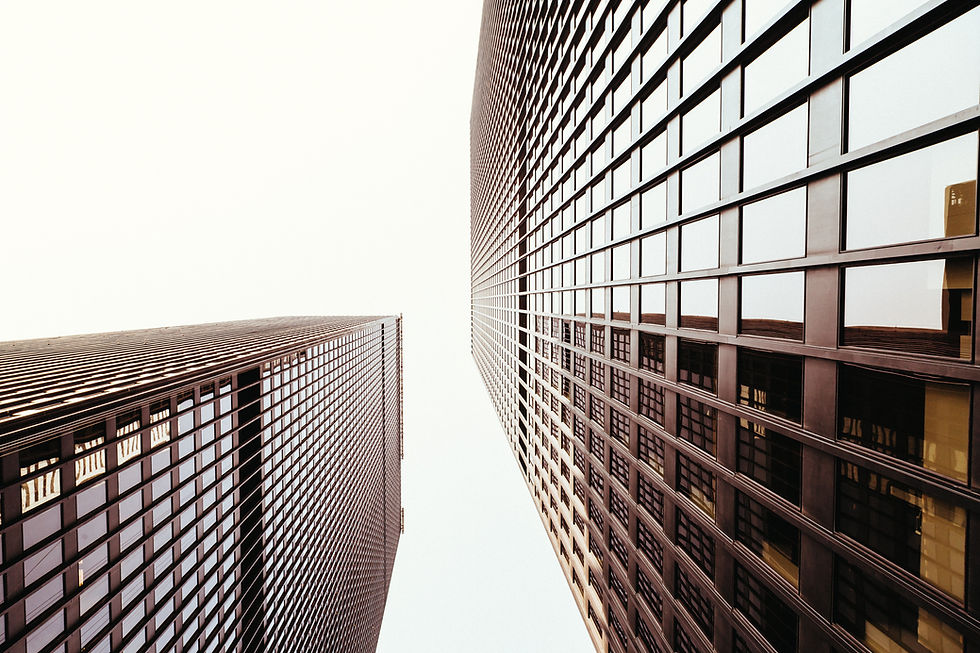Exploring the Minimalist Aesthetic in Art, Architecture, and Design
- Visual Sculptors

- Oct 27, 2023
- 4 min read
Introduction
Minimalism has become a prominent movement in various forms of art, architecture, and design, gaining popularity for its simplistic yet impactful approach. With the principle of "less is more," this aesthetic focuses on stripping down elements to their most essential form, leaving behind excessive decoration and clutter. The minimalist style has been embraced by many creatives, from renowned artists to contemporary designers, as a means of expressing a sense of calm, balance, and functionality. In this article, we will explore the origins of minimalism and how it has evolved in different disciplines. We will delve into the key characteristics of this aesthetic and its significance today. Furthermore, we will examine the impact of minimalism on our perception of beauty, functionality, and sustainability. Through a professional lens, we will investigate how minimalism has influenced the way we interact with our surroundings, and how it continues to shape our modern world. Whether you are a seasoned minimalist or simply curious about this aesthetic, this article aims to provide insights and inspiration into the world of minimalism in art, architecture, and design.
Stripping away excess for simplicity.
As the trend towards minimalism continues to gain popularity, more and more people are seeking ways to simplify their lives and surroundings. Stripping away excess for simplicity has become a mantra for many, promoting a sense of calm and clarity in an increasingly cluttered world. This minimalist aesthetic can be seen in various forms of art, architecture, and design, with its focus on clean lines, functionalism, and a limited color palette. By intentionally removing unnecessary elements, minimalist creations invite viewers to experience a sense of tranquility and contemplation. In exploring the minimalist aesthetic, we can appreciate the beauty and power of simplicity in our daily lives.
Embracing clean lines and functionality.
The minimalist aesthetic embraces the concept of "less is more," utilizing clean lines and functionality to create a sense of simplicity and order. In art, this can be seen in the use of negative space and restrained color choices. In architecture, it is seen in the use of simple geometric forms and open spaces. And in design, it is reflected in the use of functional and practical pieces rather than excessive or ornate decor. Embracing these principles allows for a clutter-free and calming environment, promoting a sense of balance and focus. Minimalism may have its roots in the visual arts, but it has become a way of life for many, offering a sense of peace and organization in an increasingly chaotic world.
Utilizing negative space to highlight form.
In addition to promoting simplicity and order, minimalism also utilizes negative space to highlight form. Negative space, also known as white space, is the area around and between the main elements in a composition. By intentionally leaving empty or negative space, the focus is drawn to the positive space or main subject, creating a powerful impact. This technique is often used in minimalist art, architecture, and design to create a sense of balance and harmony. By exploring negative space, artists and designers can create visually striking pieces that convey a sense of elegance and sophistication. This deliberate use of negative space is a key aspect of the minimalist aesthetic, adding depth and meaning to the overall design.

Incorporating natural elements for balance.
The use of natural elements in minimalist design is key to achieving a sense of balance and harmony. Incorporating elements such as wood, stone, and plants brings a sense of warmth and grounding to a space, counterbalancing the clean lines and simplicity of minimalist design. These natural materials also add texture and depth to a space, further enhancing its visual appeal. Additionally, incorporating natural elements into design allows for a connection to nature, promoting feelings of tranquility and well-being. By incorporating natural elements into minimalist design, we can create spaces that are not only visually pleasing, but also promote a sense of balance and harmony in our minds and bodies.
Minimalism goes beyond just aesthetics.
Additionally, minimalism goes beyond just aesthetics and can have a deep impact on our daily lives. By decluttering our physical spaces and simplifying our possessions, we can also declutter our minds and reduce stress. This minimalist philosophy extends to our lifestyle choices as well, encouraging us to focus on the essentials and eliminate distractions. In art, architecture, and design, minimalism challenges us to consider the purpose and functionality of each element, rather than just its visual appeal. It promotes mindfulness and intentional living, bringing a sense of calm and clarity to our surroundings. Ultimately, exploring the minimalist aesthetic goes beyond just creating visually pleasing spaces, but can also lead to a more balanced and fulfilled life.
Bottom Line
In conclusion, the minimalist aesthetic has had a profound impact on the world of art, architecture, and design. Its focus on simplicity, functionality, and minimalism has influenced countless artists and designers, and continues to be a popular style in modern times. From the clean lines of minimalist buildings to the sleek and clutter-free designs of everyday objects, the minimalist aesthetic demonstrates the power and beauty of simplicity. As we continue to explore and appreciate this aesthetic, we can see how it has shaped and continues to shape our world in meaningful ways.
At Visual Sculptors, we offer an array of services including but not limited to Word processing, PowerPoint presentations, PowerPoint template creation, Investor Pitch deck design, graphic design, Google Slides, online and offline marketing collaterals.
We take immense pleasure in offering our esteemed clientele world-class Management Consulting Presentation Services spearheaded by our team of Ex-McKinsey Presentation Designers. Our team boasts of an impressive portfolio of designing visual aids, ranging from PowerPoint presentations, Canva, Google Slides, and Adobe Acrobat. We are renowned for our exceptional ability in crafting top-notch presentations that resonate with audiences around the world.

Comments